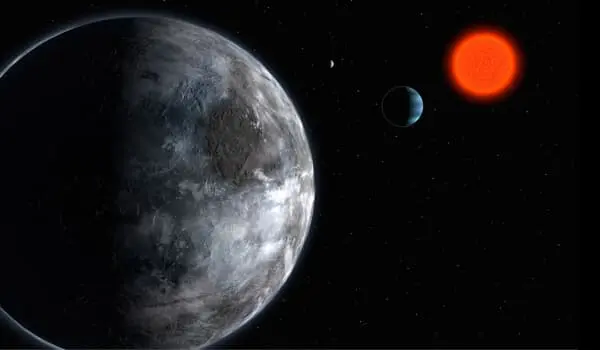Gliese 581c is a 2007 discovery of a super-Earth planet. It is a planet that orbits the Gliese 581 system. It is the second planet discovered in the system and the third planet in the order of discovery from the star. It is classified as a super-Earth because its mass is at least 5.5 times that of the Earth (a category of planets with masses greater than the Earth’s up to ten Earth masses). While early research suggested that Gliese 581c may have liquid water on its surface because it is in the “habitable zone” of its star, more recent research suggests that it may have a Venus-like environment.
Gliese 581c piqued astronomers’ interest because it was reported to be the first potentially Earth-like planet in its star’s habitable zone, with a temperature suitable for liquid water on its surface, and thus potentially capable of supporting extremophile forms of Earth-like life. It is located in the Gliese 581 system, which is only 20 light-years away from Earth (in celestial terms). However, additional research calls the planet’s habitability into question.
The Gliese 581 system is relatively close to Earth, at 20.37 light-years (193 trillion kilometers; 120 trillion miles) in the direction of the Libra constellation. This distance, together with the declination and right ascension coordinates, pinpoints its precise location in the Milky Way.
Discovery
The team published a paper on their findings on April 27, 2007, in the journal Astronomy & Astrophysics. Gliese 581c was discovered using the radial-velocity method, which means it was discovered via tugs on its parent star. It was reported at the time of discovery to be the first potentially Earth-like planet in its star’s habitable zone and the smallest-known extrasolar planet orbiting a main-sequence star, but on 21 April 2009, another planet orbiting Gliese 581, Gliese 581e, with an estimated mass of 1.9 Earth masses, was announced.
They also announced the discovery of another planet in the system, Gliese 581d, in the paper, with a minimum mass of 7.7 Earth masses and a semi-major axis of 0.25 astronomical units. Researchers studying Gliese 581 have had varying opinions over the years about the number of planets present; one example is the discovery of Gliese 581g in 2010.

Physical characteristics
Mass
Gliese 581c’s existence and mass have been determined using the radial velocity method of detecting extrasolar planets. The mass of a planet is calculated by the small periodic movements of the host star Gliese 581 and its planets around a common center of mass. The minimum mass of the planet is determined to be 5.5 Earth masses when all six planets are fitted with a Keplerian solution. The radial velocity method cannot determine the true mass on its own, but it cannot be much larger than this or the system will become dynamically unstable.
Radius
There are no radius measurements for Gliese 581c because it has not been detected in transit. Furthermore, the radial velocity method used to detect it only places a lower limit on the planet’s mass, implying that theoretical models of planetary radius and structure are limited in their utility. However, assuming that the planet’s orbit has a random orientation, the true mass is likely to be close to the measured minimum mass.
Various models can be used to calculate the radius if the true mass is assumed to be the minimum mass. According to Udry’s team, if Gliese 581c is a rocky planet with a large iron core, it should have a radius roughly 50 percent larger than Earth.
















